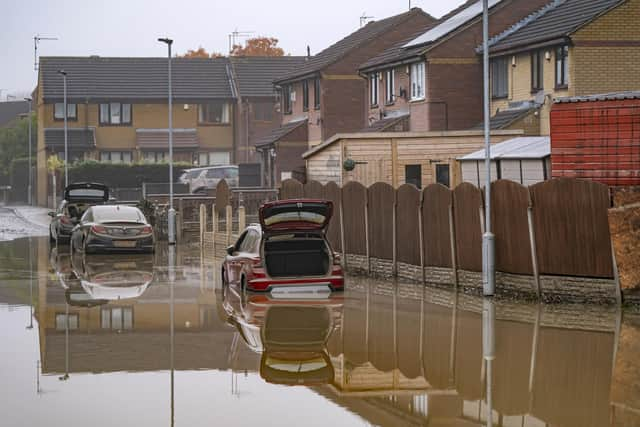Policy and planning failures are making the flooding problem worse - Will Prescott
More recently, the 2007 UK summer floods led to over 55,000 homes and up to 6,000 businesses being flooded, and around £3bn in insurance claims.
Thanks to climate change, England looks set to experience more severe floods more often. This is because climate change increases the odds of record-breaking rainfall and with it the associated risk of flooding. Additionally, rising sea levels increase the chance of storm surges inundating low-lying coastal areas. Unsurprisingly, the UK Climate Change Committee (CCC) recognised flooding as one of the greatest risks that the UK faces from climate change.
Advertisement
Hide AdAdvertisement
Hide AdAccording to the UK Health Security Agency, “the number of people in the UK significantly at risk of flooding is projected to increase 61 per cent by 2050 under a modest (2°C) [global] warming scenario”. Even now one in six English homes are at risk of flooding. Unfortunately, policy and planning failures are making the problem worse.


The inability of many local planning authorities to base their decisions on the latest climate forecasts means that properties continue to be developed in areas at risk of future flooding. Between 2013 and 2020, 10 per cent of all new homes built were in the areas “at the highest risk of flooding”. This is despite the National Planning Policy Framework clearly stating that “inappropriate development in areas at risk of flooding should be avoided by directing development away from areas at highest risk”.
The consequences have been sadly predictable — one Environment Agency report found, for example, that about a quarter of the 127 Local Planning Authorities (LPAs) surveyed “were aware of flooding to developments built within the last 10 years”.
To make matters even worse, there has been insufficient planning to protect crucial infrastructure, such as hospitals, bridges, roads and Tube stations, from flooding.
Advertisement
Hide AdAdvertisement
Hide AdWhile flooding will always be a part of English life, there are ways we can reduce its impact and ensure that key services are as resilient as possible.
First, central government needs to better train and resource Local Planning Authorities so that they base planning decisions on the most up-to-date climate projections. By enabling more informed planning decisions, this should help to minimise the number of houses built in high flood-risk areas.
Second, by restoring parts of the natural environment, we can strengthen natural defences against flooding. As Friends of the Earth has suggested, measures such as restoring peatlands and planting more trees can absorb some of the rainfall that would otherwise flow across the landscape. Substituting concrete for more porous materials in urban areas can also reduce the amount of runoff water. This not only protects our homes but increases biodiversity in the process, making our surroundings greener and more beautiful. Third, as Bright Blue has previously argued, central government should take steps to ensure that hospitals, schools and transport infrastructure are better adapted to cope with flood events.
Will Prescott is a researcher at the Bright Blue think tank.
Comment Guidelines
National World encourages reader discussion on our stories. User feedback, insights and back-and-forth exchanges add a rich layer of context to reporting. Please review our Community Guidelines before commenting.